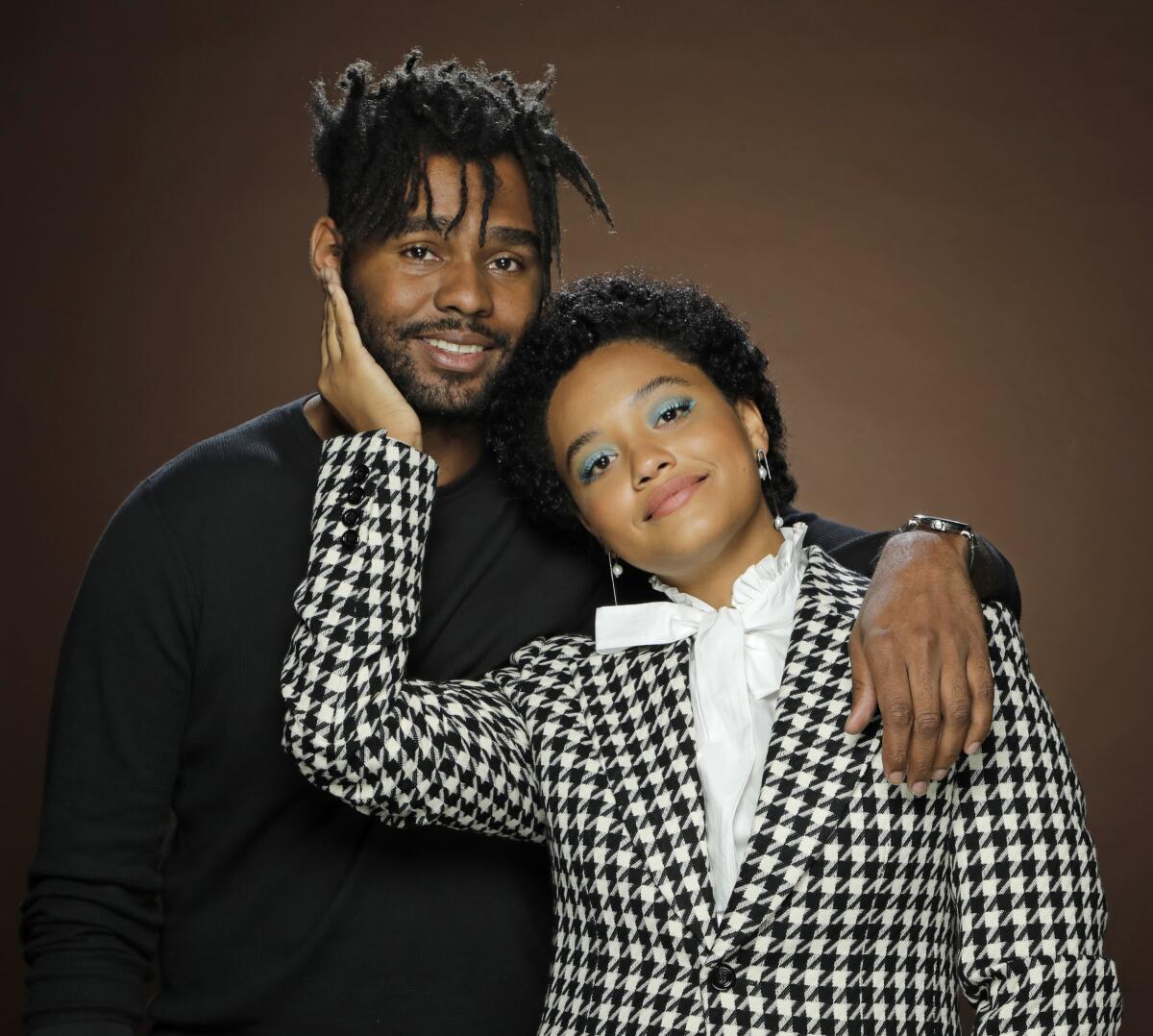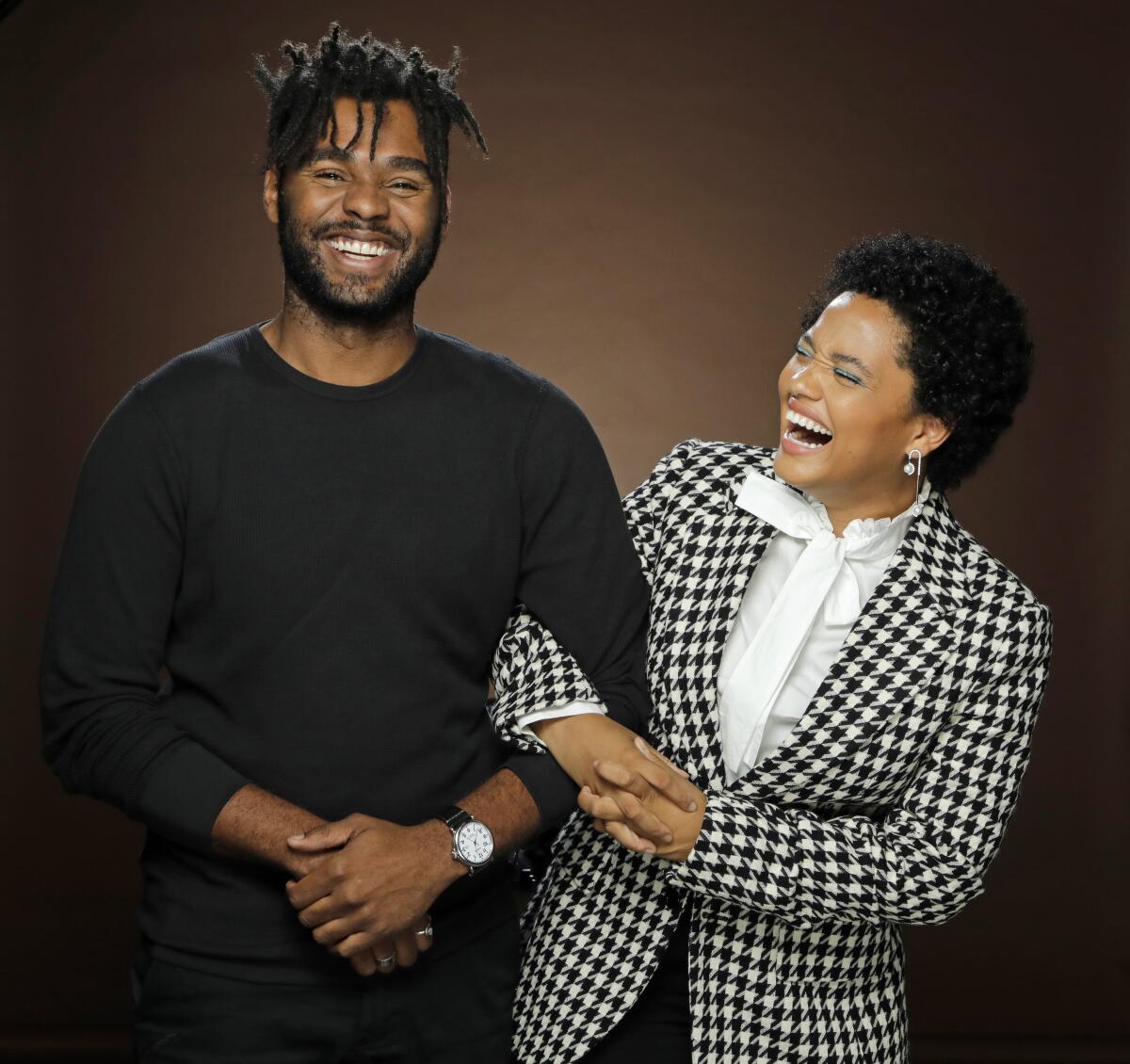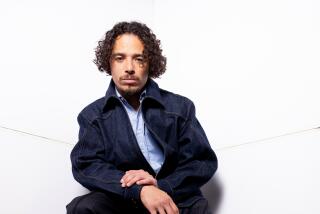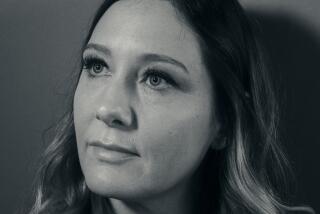‘Sweetheart’ puts Kiersey Clemons at the center of a survival thriller. You can thank director J.D. Dillard

As the horror genre has grown in popularity, so too have its subgenres.
As the rebooted “Halloween” series aims to revive nostalgia for the slasher genre, movies like this year’s “Ready or Not” and “Us” take a stab at social commentary in the guise of popcorn thriller. Earlier this year, Sony’s “Brightburn” attempted to fuse the superhero and horror genres. And this week, Blumhouse releases a film on digital and on-demand that returns to two genres of direst circumstances: horror and survival thrillers.
“Sweetheart,” from director J.D. Dillard, takes the classic lost-at-sea narrative and throws in a sea monster. The film follows Jenn (Kiersey Clemons), who washes ashore on a remote island alone and is forced to defend herself against a hulking aquatic creature that stalks the beach at night.
Shot in under a month in Fiji, “Sweetheart,” which premiered at this year’s Sundance Film Festival, was produced on a micro-budget. It features one location and just three actors in speaking roles, relying on Clemons’ innate charisma and naturalism to carry the story.
“The second the script was written, she was the first person I had in mind,” Dillard said of Clemons, whose credits include “Neighbors 2,” “Transparent” and the indies “Dope” and “Hearts Beat Loud.” “I knew that this movie would work or not based on her performance. Ninety-five percent of the movie is just looking at her face.”
That’s why in their research, Dillard and co-writers Alex Hyner and Alex Theurer studied the Tom Hanks classic “CastAway” for visual references. “It’s sort of the essential survival movie,” Dillard said. “Obviously you want to look for ways to tell a new story but also see what works. Our homework was diverse; it was more tone and environment that we wanted to look at for inspiration than horror.”
Clemons, who flirted with the thriller genre in 2017’s remake of “Flatliners,” says she’s not a huge horror fan (“I get scared pretty easily. ... I get really freaked out and have nightmares,” she said) but calls the genre “the most rewarding to film.”
“You’re really using your imagination,” she said. “It’s this mix between being very exaggerated but real and heightened and trying to feed into the fears of everyone in the audience.”
The Times caught up with Dillard and Clemons to discuss shooting horror on the beach, centering a black lead in a survival story and what it’s like to carry a movie with limited dialogue.
J.D., what inspired you to write this story?
J.D. Dillard: I was down at Virginia Beach for a wedding, just standing and looking out at the water with some friends, trying to think of the scariest possible thing that could happen. And [I decided] that would be if a creature were to stand up and look at me. The idea came from that shot, basically. We kind of went backward from there.
Also, a lot of “Sweetheart” came from my own frustration about how much backstory there is in a lot of genre stories. Almost as an exercise I wanted to see what it would be like to take all of that away and revert back to let the camera and our sound design and our actors do all the work.
Kiersey, what attracted you to the project?
Kiersey Clemons: I wanted to work with J.D. I was a fan of his first movie, “Sleight,” and it’s always exciting to work with young black filmmakers.
What were the challenges of carrying a film with so little dialogue and interaction with other characters?
KC: It was actually really fun because I got to really rely on my face, which isn’t something I normally do. It’s something that I think sometimes I can forget to do. It was a nice long acting class.
How did you prepare for the role?
KC: I ran so much. The shape that I was in at the time, I was like, “I don’t know if I can run up and down on the beach and act for 12 hours a day.” So I ran quite a bit just to get my cardio and stamina up. I just physically wanted to be able to deliver. And that was honestly it. The film offers very little backstory about our protagonist, Jenn.
Did you make up a backstory for her to get into character?
KC: I feel like Jenn was taking a year off of college and maybe playing basketball and was just dating this older, rich white guy. She’s just bored and doesn’t really have much self-worth. And now she’s in this situation where she really has to face herself. And in facing this monster, I think she’s also having to face herself as one would if they were the only person alone on an island.

J.D., why did you decide to call the film “Sweetheart”?
JD: There are a thousand expected ways you could do an amphibious creature survival story, but as we got deeper into the script, it just seemed way more fun to hang the title on this term for Kiersey’s character. Also, it’s a lot harder to figure out what it’s about.
What is the significance, in your opinion, of the protagonist and last person standing being a black woman in this survival story, a genre that often doesn’t feature people of color?
JD: My little sisters and I have all grown up being genre-obsessed fans. I don’t think it was until a little later in our lives that we realized so many of our heroes were white. And that’s not by choice necessarily, but when you’re watching old noirs or these big genre stories, it’s so rare that you see yourself.
KC: A lot of times we do see white people in those roles. It’s very rare that you see a black or brown or Asian person in those parts. We talk about movies and we talk about giving women and people of color more roles, but the story lines are all kind of the same. We still see women of color end up playing the same parts over and over again. We don’t get to be in niche movies.
What was the biggest challenge of making a movie with such a small budget and so few speaking characters?
JD: Truly, the biggest thing with budget is just time. If I miraculously in the middle of filming won the lottery, I would’ve just shot everything one more time. Because the first thing that goes when the money goes away is your schedule. Especially considering we were shooting in a tropical environment that does not care what your schedule is. You’re sort of at the mercy of the weather.
What was it like shooting in Fiji?
KC: We had so much fun. We were just on a boat drinking Fijian beer on the weekends, it was great.
JD: We lived on the main island and commuted half an hour every day to a much smaller island called Bounty Island. Basically, we just rented the entire island and the bungalows [served as] trailers and production offices. Fiji is so naturally beautiful. I have never worked on a movie where I could go jump in crystal blue water during lunch to cool off. That said, shooting in a tropical environment is just challenging in and of itself. No one feels bad for you when you’re shooting on a beautiful tropical island, but it’s definitely hard.
What were some of the biggest challenges?
JD: I feel like there’s always this fatigue that hits you on like day three of a shoot. But this fatigue was honestly so severe because you’ve been in the sun for 14 hours and your feet and ankles are raw from the sand and trudging across unpaved roads on your way walking to set.
KC: They had to broom the beach after every take to sweep up my tracks. Also it would be really hot and sometimes I would forget that I wasn’t supposed to be wet for a scene and I would get in the ocean with my clothes on. I don’t think that made wardrobe very happy.
JD: You’re so far away from many of the things that can make your life easier. Almost everything we needed had to be shipped to the island, where when you’re shooting in L.A. you can go up the street and get what you need.
Spoiler warning: What follows reveals some surprise elements about the ending of “Sweetheart.” Do not read before seeing the movie if you want to keep all the secrets unspoiled.
What do you think happens next for Jenn after the movie ends?
KC: I think she might’ve just died on the island [laughs]. I know that’s horrible to say, but I think [keeping the ending] really open to interpretation is kind of the point. It makes you look at yourself and go, “How do I want this movie to end?” And you can kind of tell yourself it ends however you imagine it ending.
Would you want to continue the story or the character in a sequel?
JD: I’m down for whatever Kiersey wants to do but I think the story ends properly. If anything, maybe there’s a TV show where we go back home with the monster head.
KC: That would be really fun. I’m trying to go back to Fiji, you feel me? I would love to see Jenn if she were to get off the island because we didn’t get much insight on her life before. I think it would be really fun to go back home and see what was going on before and then also to see how she gets treated by the public and how much people believe her.
More to Read
Only good movies
Get the Indie Focus newsletter, Mark Olsen's weekly guide to the world of cinema.
You may occasionally receive promotional content from the Los Angeles Times.











